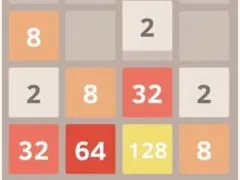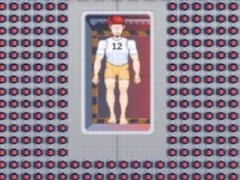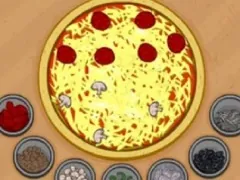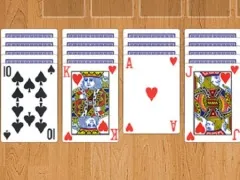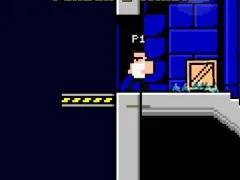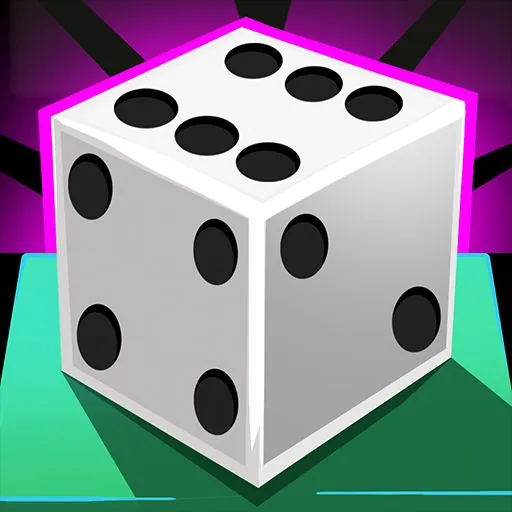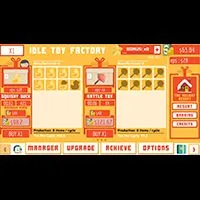Piano Tiles - Unblocked Games 6x
About Piano Tiles - Unblocked Games 6x
We are thrilled to present an in-depth exploration of **Piano Tiles**, a captivating and universally adored rhythm game that has taken the digital world by storm. This engaging title offers a unique blend of simple mechanics and demanding gameplay, ensuring a thrilling experience for players of all ages and skill levels. At its core, Piano Tiles challenges your reflexes and your sense of timing, all set to an increasingly exhilarating soundtrack. The premise is deceptively straightforward: tap on the black tiles as they descend your screen, and crucially, avoid tapping on the white tiles. Each successful tap aligns with the beat of the music, creating a harmonious cascade of sounds and visuals. However, the slightest misstep, a moment of delayed reaction, or an accidental brush against a white tile, results in an abrupt end to your musical journey. As you advance through the game, the pace accelerates, the tiles appear with greater frequency, and the complexity of the musical arrangements deepens, pushing your abilities to their limits and offering an endlessly replayable challenge.
The Essence of Piano Tiles Gameplay
The enduring appeal of **Piano Tiles** lies in its elegantly simple yet profoundly addictive gameplay loop. Players are presented with a scrolling screen filled with rows of tiles, some black and some white. The objective is simple: strike the black tiles as they pass a designated point on the screen, synchronizing your taps with the underlying musical score. The visual feedback is immediate and rewarding; each correct tap produces a musical note, contributing to the song. Conversely, striking a white tile, or missing a black tile altogether, instantly halts the game. This binary outcome—success or failure—creates a high-stakes environment where concentration is paramount. The game doesn't merely test your ability to tap; it tests your capacity to maintain focus under increasing pressure, to anticipate the rhythm, and to react with precision. The transition from a slow, melodic introduction to a frantic, rapid-fire sequence of notes is where the true mastery of **Piano Tiles** is forged. It’s a test of dexterity, auditory perception, and mental fortitude, making every play session a dynamic and engaging event.
Mastering the Mechanics: Precision and Timing
The core mechanics of **Piano Tiles** are accessible to anyone, but mastering them requires dedication and practice. The game relies heavily on two fundamental pillars: **precision** and **timing**. Precision refers to the accuracy of your taps. It’s not enough to simply touch the screen in the general vicinity of a black tile; you must tap the tile itself. This distinction becomes particularly important as the game progresses and the tiles shrink or move at higher speeds. Timing, the other crucial element, is directly tied to the musical accompaniment. Each black tile corresponds to a specific note or beat in the song. To achieve a high score and progress further, your taps must align perfectly with these musical cues. This creates an immersive synesthetic experience where the visual rhythm of the falling tiles merges with the auditory rhythm of the music. The game provides subtle, yet effective, visual and auditory cues to guide players, but ultimately, it is the player’s ability to internalize the rhythm and execute rapid, precise taps that determines their success. The challenge escalates organically, ensuring that players are constantly pushed to refine their skills without feeling overwhelmed by an impossibly steep learning curve.
The Allure of Different Music Modes
One of the standout features contributing to the longevity and widespread appeal of **Piano Tiles** is the remarkable diversity of its musical library. The game transcends being a mere reflex test by offering a rich tapestry of musical genres and styles. Players can immerse themselves in the timeless elegance of classical compositions, experiencing iconic pieces by masters like Mozart, Beethoven, and Chopin rendered in the game's unique interactive format. For those with a preference for more contemporary sounds, **Piano Tiles** also features a curated selection of popular hits from various genres, including pop, electronic, and even rock. This broad spectrum of music ensures that there is something to resonate with every player's taste. Furthermore, the inclusion of different musical modes adds another layer of engagement. Whether you prefer the melancholic beauty of a classical sonata or the pulsating energy of an electronic dance track, the game adapts to provide a fitting rhythmic challenge. Each musical piece is meticulously integrated into the gameplay, with the speed and complexity of the tiles often mirroring the tempo and structure of the music. This thoughtful design choice transforms **Piano Tiles** from a simple game into a truly musical experience, where players don't just play the game; they play the music.
Exploring the Different Game Modes
**Piano Tiles** offers a variety of game modes designed to cater to different player preferences and skill levels, ensuring that the experience remains fresh and engaging. Each mode presents a unique twist on the core gameplay, encouraging players to adapt their strategies and test their abilities in new ways.
Classic Mode: The Foundation of the Experience
The Classic Mode serves as the foundational experience for **Piano Tiles**. In this mode, the primary objective is to tap as many black tiles as possible as they fall. The game continues until a tile is missed or a white tile is inadvertently tapped. The focus here is on endurance and consistent performance. As players successfully tap tiles, the speed at which they appear gradually increases, and the musical tempo quickens. This mode is an excellent introduction to the game's mechanics and is perfect for players looking to build their fundamental skills and achieve high scores through sustained concentration. The challenge in Classic Mode lies in maintaining accuracy and speed over an extended period, pushing players to develop a steady rhythm and quick reflexes.
Arcade Mode: A Thrilling Rush
For players seeking a more dynamic and unpredictable challenge, Arcade Mode offers an exhilarating experience. This mode introduces a host of special tiles and power-ups that can significantly alter the gameplay. Players might encounter tiles that require multiple taps, tiles that disappear quickly, or even tiles that temporarily reverse the scrolling direction. Power-ups can grant temporary advantages, such as slowing down the tiles or providing a shield against mistakes. The objective in Arcade Mode is not just to survive but to accumulate points rapidly by mastering the game's various mechanics and leveraging the available power-ups effectively. The pace in Arcade Mode is often faster and more varied than in Classic Mode, demanding quick adaptation and strategic thinking. This mode truly tests a player's ability to react to unexpected changes and capitalize on opportunities for maximum score gain.
Zen Mode: A Calm Yet Challenging Pursuit
In contrast to the high-octane excitement of Arcade Mode, Zen Mode provides a more relaxed yet still challenging gameplay experience. In Zen Mode, the focus is on sustained tapping over a set period, typically 60 seconds. The speed of the tiles is constant, allowing players to find a comfortable rhythm and focus on achieving a high tap count without the pressure of accelerating difficulty or disruptive special tiles. This mode is ideal for players who wish to practice their timing and precision in a more controlled environment or for those who simply want to enjoy the satisfying sensation of creating music through continuous, accurate taps. Zen Mode emphasizes endurance and the ability to maintain a consistent pace, offering a peaceful yet demanding test of skill.
Time Attack Mode: Race Against the Clock
As the name suggests, Time Attack Mode is a race against the clock. Players are given a limited amount of time to achieve the highest score possible by tapping as many black tiles as they can. The speed of the tiles is often set at a challenging level from the outset, and the pressure to perform quickly is immense. This mode is perfect for players who thrive under pressure and enjoy fast-paced, intense gameplay. Success in Time Attack Mode hinges on the ability to make rapid, accurate decisions and to execute taps with extreme efficiency. It’s a test of pure speed and reaction time, where every second counts and a single mistake can cost precious points.
Visuals and Sound Design: Creating an Immersive Experience
The success of **Piano Tiles** is not solely attributed to its addictive gameplay; the game's meticulous design in terms of visuals and sound plays a pivotal role in creating a truly immersive and captivating experience. The aesthetic is intentionally minimalist, allowing the player to focus entirely on the tiles and the music. The clean lines and contrasting colors—primarily black and white—ensure that the interactive elements are easily distinguishable, even at high speeds. This clarity is crucial for maintaining accuracy and preventing frustrating misclicks. The visual presentation is further enhanced by subtle animations and effects that provide satisfying feedback for every tap, contributing to a sense of accomplishment.
However, it is the sound design that truly elevates **Piano Tiles** to its status as a beloved rhythm game. The game expertly blends pre-existing musical compositions with the in-game audio cues. Each tap on a black tile produces a clear, resonant musical note, perfectly synchronized with the soundtrack. This creates a powerful synesthetic effect, where the player actively participates in the creation of the music. The variety of musical genres incorporated into the game means that players can experience everything from the delicate melodies of classical piano pieces to the energetic beats of contemporary pop hits, all while their rhythmic tapping shapes the soundscape. The sound effects for successful taps are satisfying and rewarding, while the jarring sound of a missed note or an accidental tap on a white tile serves as an immediate and effective indicator of error. This carefully orchestrated audio-visual synergy is fundamental to the game's addictive nature, making each play session a deeply engaging sensory experience.
The Role of Music in Gameplay Engagement
The integration of music in **Piano Tiles** is not merely a background element; it is intrinsically linked to the core gameplay mechanics. The rhythm of the music dictates the pace at which the tiles appear, transforming the game into an interactive musical performance. Players are encouraged to listen intently to the melody and tempo, using it as a guide for their finger movements. This auditory cueing system is what allows players to achieve higher levels of accuracy and speed. As the music swells and quickens, so too does the challenge, creating a natural escalation of difficulty that feels organic and rewarding. The diverse range of musical pieces, from the intricate structures of classical music to the driving beats of modern tracks, ensures that players are constantly engaged with a variety of auditory experiences. This variety also serves to prevent monotony, offering a fresh challenge with each new song. Ultimately, the music in **Piano Tiles** transforms a simple tapping game into a sophisticated rhythm challenge that appeals to both the player's reflexes and their musical sensibilities.
Visual Clarity and Accessibility
The visual design of **Piano Tiles** prioritizes clarity and accessibility, ensuring that the game can be enjoyed by a wide audience. The use of distinct color contrasts, primarily between the black tiles to be tapped and the white tiles to be avoided, makes it easy for players to quickly identify their targets, even during fast-paced sequences. The tiles themselves are designed with a clean, uncluttered aesthetic, minimizing visual distractions. This focus on simplicity is crucial, especially as the game's speed increases. Players need to be able to process information rapidly, and the clear visual language of **Piano Tiles** facilitates this. Furthermore, the game’s interface is intuitive and user-friendly, requiring no complex tutorials or elaborate controls. The core mechanic of tapping is universally understood, making the game immediately playable for anyone. This commitment to visual clarity and ease of access is a significant factor in the game's widespread popularity and its ability to engage players from diverse backgrounds and with varying levels of gaming experience.
Why Piano Tiles is a Top Choice for Unblocked Gaming
**Piano Tiles** has emerged as a particularly popular choice within the realm of unblocked gaming environments, such as schools and workplaces. Its appeal in these settings stems from several key factors that align perfectly with the constraints and preferences of players seeking accessible entertainment during restricted periods.
Engaging Yet Non-Disruptive Gameplay
The core gameplay of **Piano Tiles** is inherently engaging, offering a significant challenge and a rewarding sense of accomplishment. However, it achieves this engagement without requiring extensive narrative comprehension, complex strategies, or noisy, disruptive in-game interactions that might draw unwanted attention. The game focuses on individual performance and concentration, making it a perfect activity for brief moments of leisure without causing a disturbance. The visual and auditory elements, while immersive, are generally contained and do not inherently demand loud playback or extensive screen real estate, allowing for discreet play. This balance of challenge and subtlety makes it an ideal candidate for environments where access to entertainment is limited.
Quick Play Sessions and Instant Gratification
One of the most significant advantages of **Piano Tiles** in restricted environments is its suitability for quick play sessions. Players can often jump into a game, play a few rounds, and achieve a satisfying level of engagement within a short timeframe. Whether it's a brief break between tasks or a few minutes of downtime, the game provides instant gratification. The relatively short duration of individual game attempts, coupled with the immediate feedback loop of success or failure, makes it easy to pick up and put down without losing momentum. This adaptability to short bursts of play is invaluable in situations where longer gaming sessions are not feasible.
Universal Appeal and Skill Development
The universal appeal of **Piano Tiles** transcends age and skill level. Its simple premise means that anyone can understand and begin playing within moments. Yet, the escalating difficulty and the pursuit of higher scores provide a deep and engaging challenge for even the most seasoned players. This broad appeal ensures that it remains a popular choice for a diverse group of users. Moreover, the game inadvertently fosters the development of valuable cognitive skills, such as improved concentration, enhanced hand-eye coordination, and quicker reaction times. These benefits, combined with the sheer fun factor, contribute to its enduring popularity.
Accessibility and Ease of Access
In many restricted environments, the primary barrier to accessing entertainment is the availability of games that are not blocked by network filters. **Piano Tiles**, often available through web-based platforms, bypasses the need for downloads or installations that might trigger security alerts or be disallowed. Its availability on accessible platforms means that players can often engage with the game directly through their web browser, making it a readily available form of entertainment. This ease of access is a critical factor in its widespread adoption in settings where traditional gaming is often inaccessible.
Tips and Strategies for Achieving Higher Scores
While **Piano Tiles** is easy to learn, achieving truly impressive scores requires a combination of technique, strategy, and practice. We have compiled some key insights to help players elevate their performance and conquer the increasingly challenging musical landscapes presented by the game.
Develop a Consistent Tapping Rhythm
The most fundamental strategy for success in **Piano Tiles** is to establish and maintain a consistent tapping rhythm. Avoid erratic or hurried taps. Instead, focus on a steady, metronomic beat that aligns with the music. Even when the speed increases, try to maintain this underlying rhythm; your fingers will adapt more effectively to a predictable pace than to a chaotic one. Practicing with slower songs can help solidify this foundational rhythm before tackling faster tracks.
Utilize Multiple Fingers
As the game’s speed escalates, relying on a single finger becomes increasingly difficult, if not impossible. Employing multiple fingers is crucial for keeping up. Experiment with different finger combinations. Many experienced players use two thumbs, or even a combination of thumbs and index fingers, to cover more tiles with greater speed and efficiency. The key is to find a multi-finger strategy that feels natural and allows for rapid, precise movements across the screen.
Focus on the Tiles, Not the Background
It can be tempting to get distracted by the music or the visual flair of the background. However, for optimal performance, your entire focus should be on the tiles themselves. Train your eyes to quickly scan and identify the black tiles that need to be tapped. Avoid fixating on any single tile; instead, develop a peripheral awareness that allows you to track multiple tiles simultaneously. Minimizing distractions and concentrating solely on the interactive elements will significantly improve your accuracy and speed.
Practice with Different Music Genres
The variety of musical genres in **Piano Tiles** is not just for aesthetic appeal; it's also a training tool. Each genre often comes with its own unique tempo, rhythmic patterns, and complexities. Actively playing through different musical styles will help you develop adaptability and broaden your rhythmic understanding. A player who can master a complex classical piece will likely find it easier to adapt to a fast-paced electronic track, and vice versa. Embrace the diversity of the soundtrack to become a more well-rounded player.
Learn from Mistakes and Analyze Your Play
Every mistake in **Piano Tiles** is a learning opportunity. Instead of becoming frustrated, take a moment to understand why you missed a tile or tapped a white one. Was it a lapse in concentration? Did you misjudge the timing? Was the speed too high for your current technique? By analyzing your errors, you can identify specific areas for improvement and adjust your strategy accordingly. Many players find it beneficial to record their gameplay (if possible) to review their performance objectively and pinpoint areas for refinement. Consistent practice combined with mindful analysis is the surest path to mastery.
The Enduring Appeal of Simple Yet Challenging Games
The phenomenon of **Piano Tiles** underscores a timeless truth in the world of gaming: the enduring appeal of titles that are simple to learn yet difficult to master. In an era of increasingly complex and graphically intensive games, there is a significant and persistent draw towards experiences that prioritize core mechanics and intuitive gameplay. These games often achieve a remarkable depth through their challenges, offering a pure and unadulterated form of engagement that resonates with a broad audience. The satisfaction derived from perfecting a skill, achieving a high score, or overcoming a difficult level in such games is often more profound than that found in more elaborate titles. **Piano Tiles** exemplifies this principle by stripping away unnecessary complexities and focusing on the fundamental challenge of rhythm and reflex. Its success serves as a testament to the power of elegant design and the universal human desire for challenge and accomplishment.
The **unblocked games** sector, in particular, thrives on this type of accessible entertainment. Games like **Piano Tiles** are often sought after because they offer immediate engagement without requiring extensive setup or bypassing complex security measures. They provide a welcome respite and a mentally stimulating activity that can be enjoyed in short bursts, fitting seamlessly into the often-restricted digital environments of schools and workplaces. The focus on core gameplay also means these titles tend to be less resource-intensive, further enhancing their accessibility across a wider range of devices and network conditions. As such, **Piano Tiles** not only stands as a superb example of a well-crafted rhythm game but also as a prime representative of the kind of engaging, accessible, and satisfying gaming experience that remains highly sought after.
